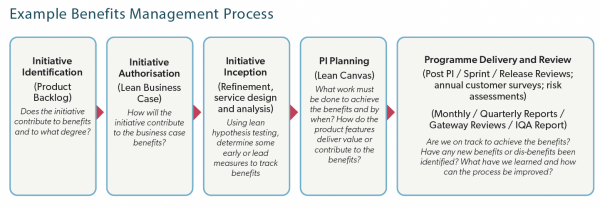The Challenge
A large NZ agency initiated a transformational IT programme using Agile. As the programme approached its first major delivery milestone, they wanted to gain assurance that the programme benefits were on track to be realised. Needing specialist benefits expertise and advice, they engaged Tregaskis Brown (TB) to undertake an objective review of the programme’s benefits, and recommend how best to measure, monitor and report them in an Agile environment.
I really appreciated Kaushiki’s approach, and I think in particular she did a really fabulous job in imparting knowledge – it’s really helped us (particularly me) be more confident in discussing benefits across the programme, which I think is a pretty great outcome!
After an initial review, TB found that:
The Goals
The organisation took these recommendations on board and re-engaged TB to:
The Solution
TB adopted a holistic, end-to-end and customised approach towards understanding and resolving the organisation’s needs. They engaged a wide range of stakeholders from different parts of the organisation including strategy, finance, customer operations, IT, PMO, and from the programme delivery team. Working groups were set up for each benefit and a series of workshops were conducted to validate and define the benefits measures. In the interests of efficiency and consistency, TB also worked with their research and evaluation team to reuse some of the existing organisational outcome measures to evaluate the programme’s benefits. The information gathered through these workshops was used to develop comprehensive benefits profile statements specifying the metrics, baselines and targets, measurement sources, frequency and ownership for each benefit.
At the same time, the consultant from TB worked with the Product Manager, Product Owner, Scrum Masters and Business Analysts on the programme to develop a method by which the relative contribution of individual initiatives to the overall programme level benefits could be assessed. This would help the programme prioritise its high value initiatives. TB proposed a “value points” system by which each initiative was assigned a certain number of points based on whether it had zero, some, or significant impact on achieving a particular benefit.
The third task that TB undertook, was to develop a measurement approach using lean methods, by which “lead” or predictive measures could be defined early in an initiative to test if a product or feature would achieve the desired benefit for its customers. In keeping with the Agile “Inspect and Adapt” principle, this approach would enable the delivery team to make necessary adjustments and reduce the risk of delivering a product that was not fit for purpose. These “lead” measures could then be used to track the overall programme or “lag” measures to determine if the final solution had achieved its planned benefits.
...the real achievement lay in the fact that both the programme delivery team as well as the business came together...
Finally, TB consolidated the outputs from these three activities into a Benefits Management and Realisation Plan (BMRP) and handed it over to the client as a living document, to be continually reviewed and updated throughout the life of the programme and used as a baseline for measuring benefits realisation once the solution had been delivered.
The Outcome
As a result of the engagement, the programme now had clear guidance on how and when its business case benefits would be measured and by whom. However, this was only one of its positive outcomes. The real achievement lay in the fact that the programme delivery team and the business had a common understanding about the importance of benefits led delivery, good benefits management practices, and the different roles and responsibilities involved in the process. And last but not the least, combining their knowledge of Lean methods, Agile delivery and benefits management, the organisation and TB succeeded in co-designing a new, end-to-approach to benefits management for large transformational programmes in a public sector Agile environment – for which, there is limited precedence and practical examples available. This, in the words of the business manager left the organisation with “much greater confidence in addressing benefits conversations”.
Download PDF
